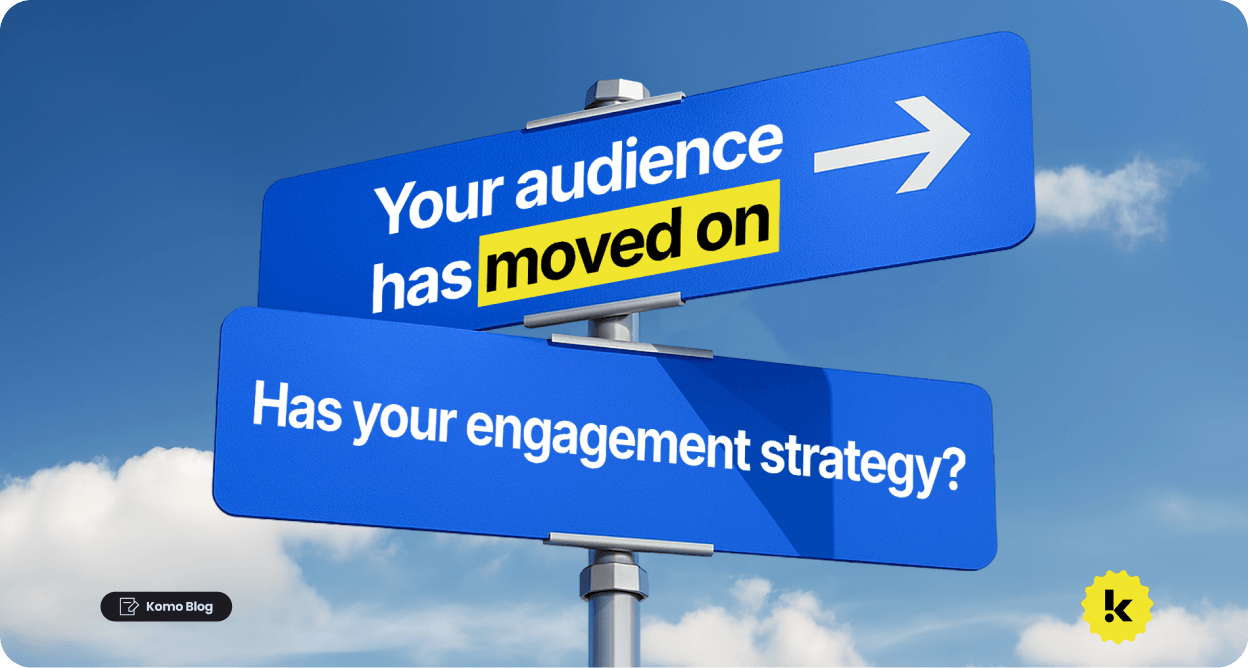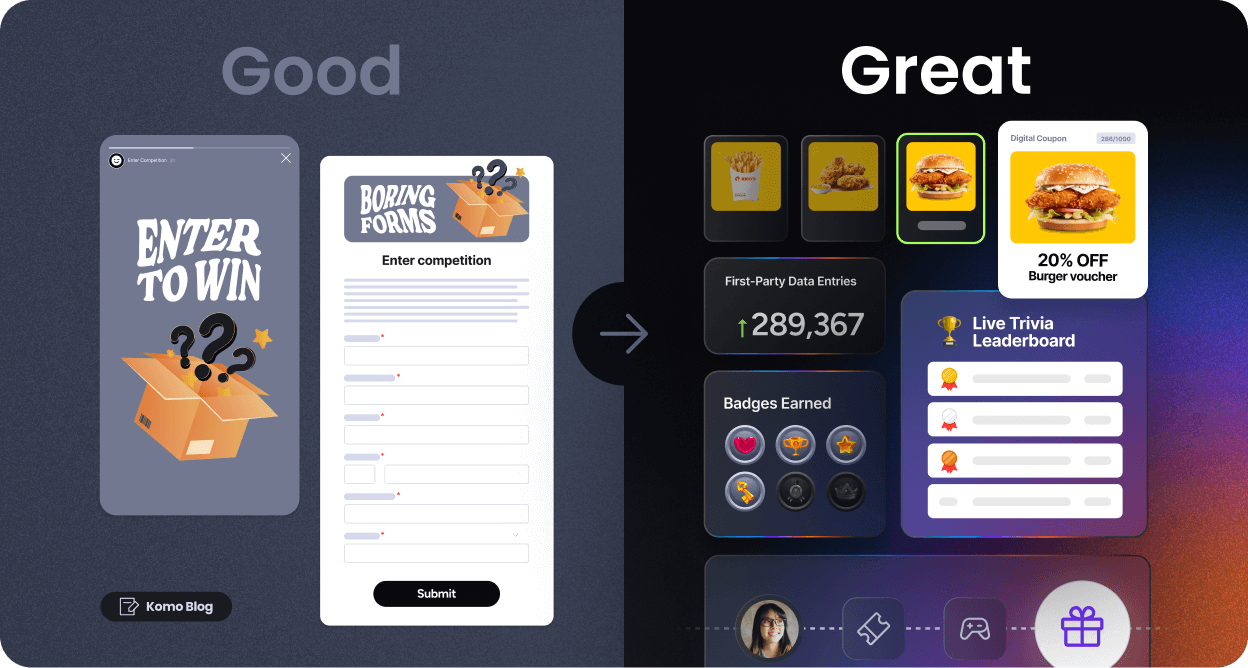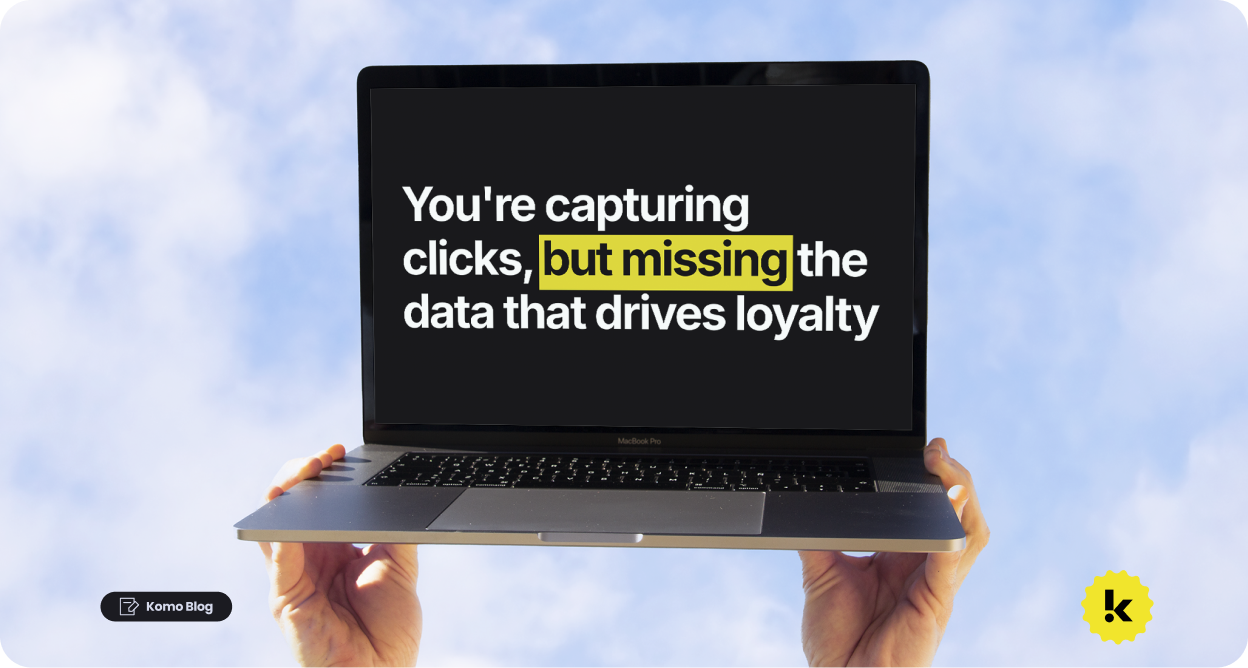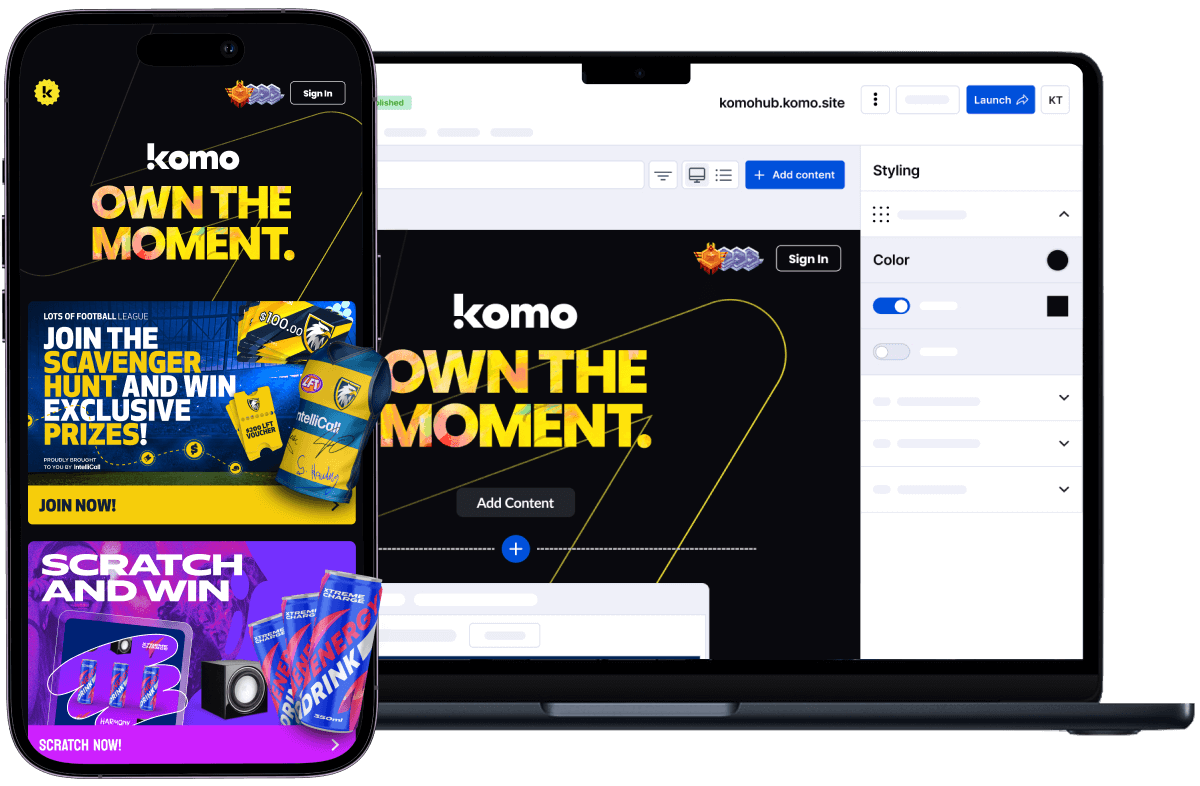If every month starts with a blank slate, your engagement strategy is broken.
You know the pattern: Plan, build, launch, analyze, repeat. Each campaign feels like starting from scratch. Each activation requires the same coordination dance across tools, teams, and vendors. Each "win" evaporates as soon as it's over.
Your team isn't lazy. Your system is.
The reactive marketing trap
Most marketing teams are stuck in permanent reaction mode.
Q1 ends, scramble for Q2 ideas. A competitor launches something, rush to respond. Leadership asks for "more engagement," spin up another campaign. The calendar drives strategy instead of strategy driving the calendar.
53% of B2B marketers report having a small team handling everything. When you're already stretched thin, reactive marketing doesn't just limit growth—it prevents it. Every urgent request pushes strategic work further down the list.
Meanwhile, nearly half of marketers cite resource constraints as their top challenge in executing engagement strategies. Translation: teams are drowning in operational busy work when they should be building relationships.
When every campaign is an island
Let's be honest about what "launching a campaign" actually means for most teams:
- Brief the agency or designer (again)
- Set up new landing pages and forms
- Configure separate analytics tracking
- Coordinate across disconnected tools
- Train the team on this quarter's approach
- Cross your fingers that it all connects
You're not building momentum. You're building from zero. Every. Single. Time.
The quiz you ran last quarter? That data lives in a spreadsheet somewhere. The customer preferences from your holiday promotion? Stuck in a different platform. The insights from your event activation? Lost in the post-mortem deck that no one reads.
The hidden cost of starting over
Every isolated campaign is expensive in ways most teams don't calculate.
There's the obvious cost: creative development, platform fees, coordination time. But the real cost is opportunity—all the intelligence you're not capturing, the personalization you're not building, the relationships you're not deepening.
When campaigns don't connect, customer data doesn't accumulate. You might have thousands of touchpoints with the same people, but each interaction starts fresh because nothing talks to anything else.
Think about it: if a customer engaged with your content six months ago, shared their preferences in a survey, and attended your webinar, does your current campaign know any of that? For most teams, the answer is no.
The coordination nightmare
71% of CX leaders say customer loyalty is harder than ever to maintain. Yet most marketing operations make building loyalty nearly impossible.
When launching a "simple" campaign requires:
- Coordinating between 3-5 different platforms
- Syncing data that doesn't naturally connect
- Managing handoffs between internal teams and external vendors
- Rebuilding similar experiences you've created before
You spend more time managing the process than optimizing the experience. More energy on logistics than on customer connection.
The tools that were supposed to make marketing easier have made it more complex.
The burnout factor
Your team didn't sign up to be project managers.
They joined to create compelling experiences, build customer relationships, and drive business growth. Instead, they're trapped in operational complexity—chasing data across systems, rebuilding wheels that already exist, and explaining why "simple" requests take weeks to execute.
This isn't sustainable. High-performing marketers leave when they feel like glorified coordinators instead of strategic contributors. The teams that stay often operate in survival mode, hitting short-term targets while knowing they're not building anything that lasts.
The compounding problem
While your team rebuilds the same campaign types quarter after quarter, your competitors who've figured out systematic engagement are pulling ahead.
They're capturing more data with each interaction. Their personalization gets smarter over time. Their customers develop habits and expectations around regular engagement. They build once and improve continuously instead of starting from scratch.
Meanwhile, you're still explaining why your "quick" campaign needs a month of setup time.
The false efficiency
Many teams think they're being efficient by reusing templates or creative assets. But template reuse isn't system thinking—it's just slightly less wasteful rebuilding.
Real efficiency means:
- Customer data that flows automatically between touchpoints
- Personalization that improves with each interaction
- Insights that inform future campaigns without manual analysis
- Engagement that compounds instead of constantly resetting
Most marketing teams have never experienced this kind of efficiency because their tools aren't designed for it.
The strategy sacrifice
When you're constantly reacting, strategic thinking gets pushed aside.
You know you should be building deeper customer relationships. You know engagement should compound over time. You know there's a better way to capture and use customer insights.
But when every campaign is a scramble, when do you have time to build the system that would make campaigns unnecessary?
Reactive marketing doesn't just limit growth—it prevents the strategic work that would unlock growth.
The real question
If you're nodding along to any of this, the question isn't whether your current approach is sustainable.
The question is: what could your team accomplish if launching engaging experiences was as easy as sending an email?
What if customer preferences from one touchpoint automatically enriched every future interaction? What if insights from last quarter's campaign were still driving personalization today? What if your team spent their time optimizing relationships instead of managing logistics?
Some teams already work this way. They've moved beyond campaign thinking entirely.
The difference isn't just in their results—it's in how their teams feel about their work.
What's possible
Ready to see how your current approach compares to teams who've broken free from the campaign cycle?
- Take the 2-minute Engagement Maturity Assessment - Discover where your team stands and identify your biggest opportunities
- See How High-Performing Teams Evolved - Real examples of marketing teams who made the shift from reactive to systematic
- Engagement Maturity Model - Understand what it takes to move from campaign chaos to engagement systems
Your team deserves better than the campaign hamster wheel.
The question is: when will you get off?
Ready to uncover your team's potential? Take our 2-minute Engagement Maturity Assessment to pinpoint your strengths and biggest opportunities.




